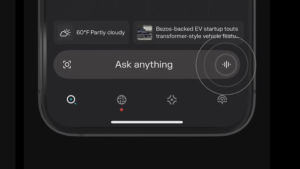Exploring the Effectiveness of Grok 3: Insights from Vlad Tenev on Market Trends and an Introduction to Vibecoding 101

An Unexpected Morning Adventure
The Escalator Incident
Kevin Roose kick-started his day with an unexpected incident at the Embarcadero subway stop in San Francisco. While navigating through the crowded, long escalator during rush hour, he found himself in a nerve-wracking situation. Someone inadvertently bumped into him, causing his phone to drop approximately 15 feet onto the platform below. Feeling a sense of panic, Kevin realized if he didn’t act quickly, his phone might be snatched or damaged.
In a split second of severe anxiety, Kevin decided to dash back down the escalator against the flow of commuters, much to their confusion. Despite his apologies and gentle pushes through the crowd, the reverse escalator only added to the drama of retrieving his lost phone. After what felt like an eternity, he finally made it back down and was relieved to find his phone intact, with no cracks—safe but definitely not a typical way to start the morning.
Technology Talks: AI and Its Current Trends
After recounting his chaotic morning, the conversation swiftly shifted to the latest developments in the tech world. In recent news, a new large language model named Grok 3 was released by xAI, a company founded by Elon Musk. This latest model has garnered attention for being comparable to leading AI models but at a significantly lower subscription cost.
Grok 3 is aimed at Premium+ subscribers on the platform X (formerly known as Twitter), making it a more affordable alternative to existing models while being deeply integrated into the platform itself. Kevin and Casey Newton shared their experiences using Grok 3, revealing that while it shows promise, it doesn’t yet have independent validation from rigorous testing.
The Capabilities of Grok 3
Kevin and Casey highlighted some notable aspects of Grok 3. They mentioned, for instance, that it seems quite capable at understanding context and providing nuanced answers to questions about complex topics like gender. However, they noted limitations, including instances where the model didn’t perform as well as expected on certain benchmarks.
One intriguing aspect discussed was how Grok’s data access allows it to analyze users’ posts on X to perceive their opinions on various topics. As AI continues to evolve, both Roose and Newton expressed curiosity about how Grok 3 would ultimately fit into the increasingly crowded landscape of AI models.
Elon Musk’s Ambitions with AI
This discussion further led Kevin and Casey to reflect on Elon Musk’s ambitions in the AI space. He signed a letter advocating for a pause in AI development, citing concerns about rapid advancements’ existential risks. However, it was revealed that simultaneously, he was racing to develop Grok, showcasing a dual interest in both caution and competition within the AI armament race.
The Future of Grok and AI Landscape
The conversation turned to potential future developments and the competitive landscape of AI technologies. As more companies rush to create their AI models, the question loomed: how would Grok distinguish itself amidst an ever-increasing array of competitors?
Kevin shared opinions suggesting that while Grok had built impressive infrastructure quickly, it needed to demonstrate unique offerings and innovations to move ahead in the market. Speculation abounded about whether Grok might play a significant role in governmental technology initiatives.
An Eye on Ethical Implications
Another topic of interest was the ethical implications of having influential figures like Elon Musk so intertwined with AI and government roles. Concerns were raised about who controls the narrative, how data is utilized, and the impact of technology on society at large.
Emerging Trends in Financial Technology
Switching gears, Kevin and Casey explored advancements in finance technology, focusing on Robinhood and its position in the market. Vlad Tenev, CEO of Robinhood, emphasized the platform’s mission to democratize access to financial assets. However, the rapid rise of meme coins and cryptocurrencies raised questions about gambling and investment safety—in particular, among younger audiences.
Reflections on Popular Culture and Financial Behavior
As they dove into financial behavior, they examined societal shifts toward more gamified forms of investing. Casey questioned whether the gamification of stocks and cryptocurrencies might lead to more adverse outcomes, such as addiction or reckless financial decisions—especially among youth.
Final Thoughts on Personal Use of AI
Both Kevin and Casey also lightheartedly shared personal anecdotes about “vibe coding” or leveraging AI to create tailored tech solutions for day-to-day challenges. Through experimenting with AI language models, they had engaged with the process of programming in accessible and novel ways—creating apps that catered to peculiar personal needs.
Their banter revealed a fascination with technology, especially how emerging tools can simplify complex tasks and enhance personal productivity, resonating deeply with listeners and tech enthusiasts alike.






